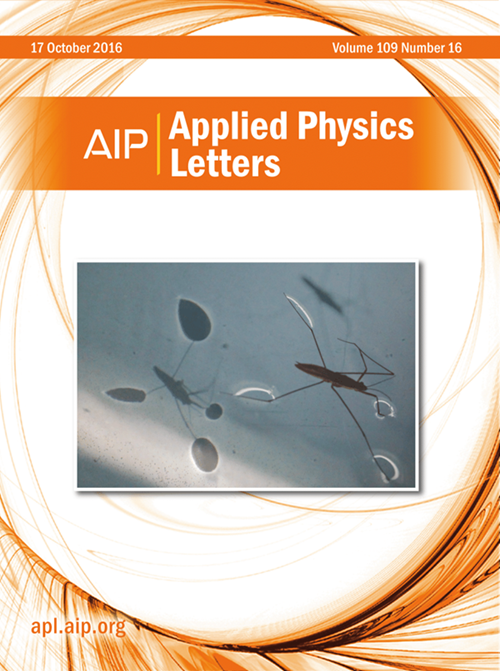Electrically tunable nonvolatile 2D van der Waals p–n heterostructures based on GeSe-quasi 2D electron gas on the SrTiO3 surface
IF 3.5
2区 物理与天体物理
Q2 PHYSICS, APPLIED
引用次数: 0
Abstract
Theoretical modulation of the current rectification ratio and turn-on voltage of p–n diodes by selecting semiconductor materials with appropriate Fermi levels remains challenging in practice. Key obstacles include lattice matching, thermal compatibility, and chemical stability during material synthesis. Most nonvolatile diodes are realized in ferroelectric systems, but size effects in ferroelectrics limit device miniaturization. In this work, we demonstrate an electrically tunable nonvolatile diode based on non-ferroelectric two-dimensional (2D) van der Waals heterostructures of GeSe and a quasi-2D electron gas on SrTiO3 surfaces. The device achieves a tunable current rectification ratio of 103–104 without gate bias application, with a continuously adjustable turn-on voltage from 0.1 to 2.1 V. Furthermore, the heterostructure demonstrates nonvolatile resistance switching behavior induced by applied bias voltage. The integration of electrical tunability and non-volatility in a single non-ferroelectric diode offers a promising platform for low-dimensional nonvolatile memory devices with multi-bit storage capability.求助全文
约1分钟内获得全文
求助全文
来源期刊

Applied Physics Letters
物理-物理:应用
CiteScore
6.40
自引率
10.00%
发文量
1821
审稿时长
1.6 months
期刊介绍:
Applied Physics Letters (APL) features concise, up-to-date reports on significant new findings in applied physics. Emphasizing rapid dissemination of key data and new physical insights, APL offers prompt publication of new experimental and theoretical papers reporting applications of physics phenomena to all branches of science, engineering, and modern technology.
In addition to regular articles, the journal also publishes invited Fast Track, Perspectives, and in-depth Editorials which report on cutting-edge areas in applied physics.
APL Perspectives are forward-looking invited letters which highlight recent developments or discoveries. Emphasis is placed on very recent developments, potentially disruptive technologies, open questions and possible solutions. They also include a mini-roadmap detailing where the community should direct efforts in order for the phenomena to be viable for application and the challenges associated with meeting that performance threshold. Perspectives are characterized by personal viewpoints and opinions of recognized experts in the field.
Fast Track articles are invited original research articles that report results that are particularly novel and important or provide a significant advancement in an emerging field. Because of the urgency and scientific importance of the work, the peer review process is accelerated. If, during the review process, it becomes apparent that the paper does not meet the Fast Track criterion, it is returned to a normal track.
 求助内容:
求助内容: 应助结果提醒方式:
应助结果提醒方式:


